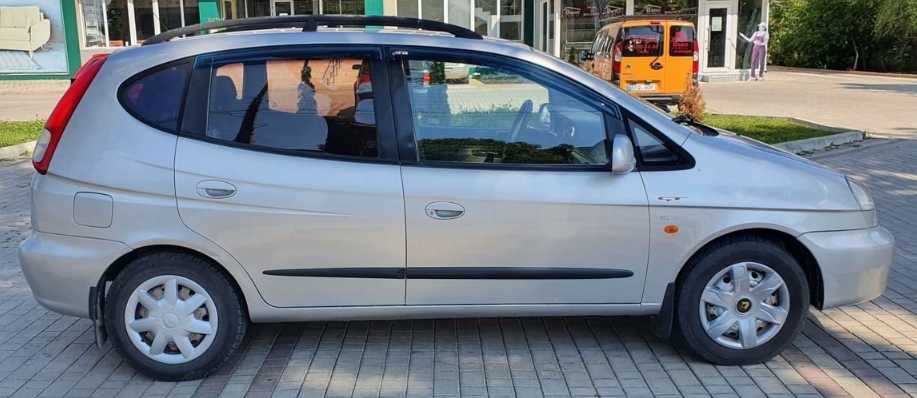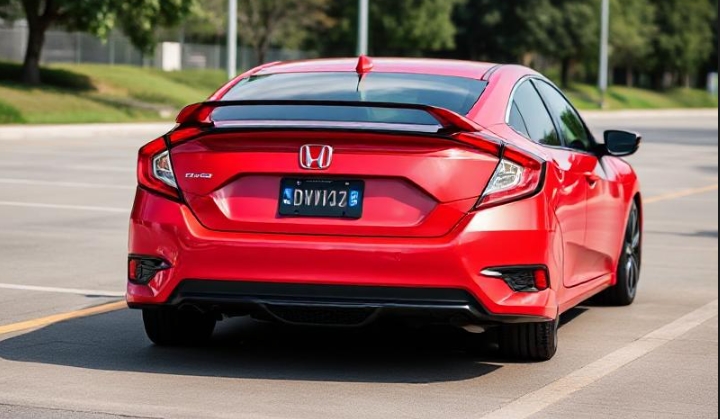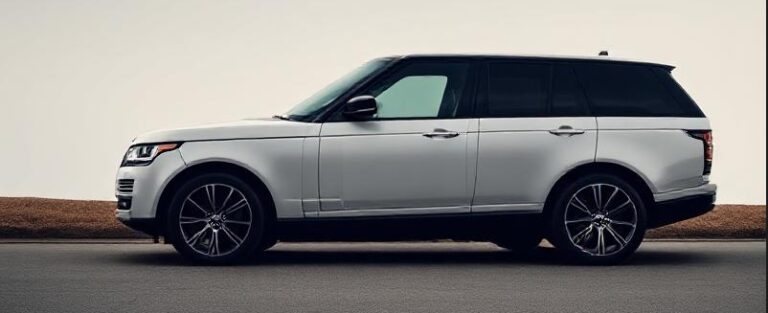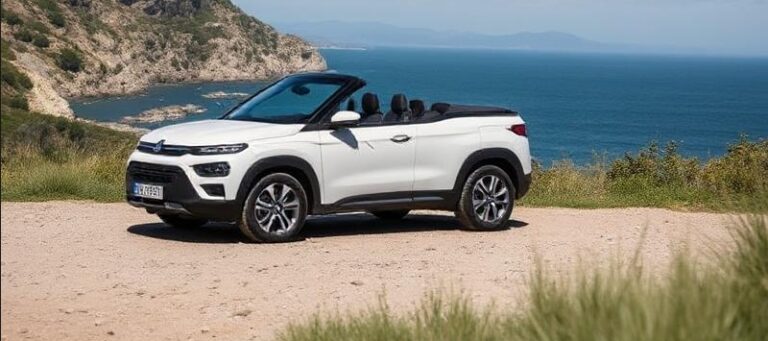The Unsung Workhorse: The Complete Story of the Daewoo Tacuma Evolution
In the annals of automotive history, certain vehicles become icons, celebrated for their performance, luxury, or groundbreaking technology. Others, however, carve out a different legacy. They are the unsung workhorses, the practical and affordable machines that quietly serve families, carry luggage for holidays, and navigate the daily grind without fanfare. The Daewoo Tacuma is a prime example of such a vehicle—a car of fascinating contrasts, blending Italian design flair with Korean pragmatism during a turbulent and transformative period for its manufacturer. This is the story of its evolution, from a hopeful concept to a multi-branded global people carrier.
Conception: A European Ambition with Italian Style
The late 1990s witnessed a seismic shift in the European family car market. The traditional saloon and hatchback were being challenged by a new breed of vehicle: the compact Multi-Purpose Vehicle (MPV). Renault had struck gold with the Mégane Scénic, and rivals like the Opel/Vauxhall Zafira and Citroën Xsara Picasso were rapidly gaining traction. These cars offered unparalleled interior space and versatility on a compact, easy-to-drive footprint.
South Korea’s Daewoo Motors, an ambitious brand aggressively expanding into Europe, knew it needed to compete in this burgeoning segment. The plan was not just to build a functional box, but to offer something with genuine design appeal. To achieve this, Daewoo enlisted a truly legendary name in automotive design: Italy’s Pininfarina. The same design house responsible for shaping iconic Ferraris and Peugeots was tasked with sculpting Daewoo’s humble family hauler.
The result was first seen in the Daewoo Tacuma Concept at the 1999 Seoul Motor Show. The concept was remarkably close to the final production model, showcasing a distinctive one-box silhouette characterized by a steeply raked windscreen that flowed seamlessly into a short bonnet. Its most memorable design cue was the triangular third side window, which gave the rear of the car a unique and instantly recognizable look. The design was clean, functional, and surprisingly elegant for a budget-oriented vehicle. It was a promising start.
The First Generation: The Daewoo Tacuma (2000-2004)
The production model, named the Daewoo Tacuma in most European markets and the Daewoo Rezzo in its home market of South Korea, was launched in 2000. Built on the platform of the Daewoo Nubira (J100) saloon, it promised car-like handling with the practicality of an MPV.
Its core strength was its interior. The Tacuma was strictly a five-seater, eschewing the third row of seats offered by some competitors like the Zafira. However, this decision maximized comfort and space for its five occupants. The rear featured three individual, full-size seats that could each slide, recline, fold, or be removed entirely. This modularity was the car’s trump card. With the rear seats removed, the Tacuma transformed into a veritable van, offering a cavernous load bay. The cabin was dotted with clever storage solutions, including under-seat trays and numerous cubby holes, further enhancing its family-friendly credentials.
The engine lineup was straightforward, borrowing powerplants from the existing Daewoo range, which were themselves based on proven General Motors (GM) designs.
1.6-litre 16-valve Petrol: This was the entry-level engine, producing approximately 105 horsepower. It provided adequate performance for city driving and light loads but could feel strained on motorways or when the car was fully laden. It was available exclusively with a 5-speed manual gearbox.
2.0-litre 16-valve Petrol: The premium engine choice, delivering a healthier 120 horsepower (later updated to around 127 hp in some markets). This engine provided more relaxed cruising ability and better acceleration, making it the preferred choice for families who regularly travelled long distances. It was offered with both the 5-speed manual and a 4-speed automatic transmission.
The trim levels offered in the UK and much of Europe followed a simple, value-focused structure.
SE (Standard Edition): This was the base model, designed to attract buyers with its low sticker price. Standard equipment was modest and included power steering, central locking, and front electric windows. Air conditioning was typically an optional extra, and the car came with steel wheels and plastic covers.
CDX (Deluxe Edition): The CDX was the more popular and well-equipped trim. It added a host of desirable features that made the Tacuma a much more comfortable daily driver.
Standard equipment on the CDX typically included:
Air conditioning
Alloy wheels
All-round electric windows
Roof rails
Front fog lights
A better-quality sound system (often with a CD player)
Body-colored mirrors and door handles
The Tacuma received a cautiously positive reception. Critics praised its exceptional practicality, spacious interior, and competitive pricing. The Pininfarina design was also frequently noted as a strong point. However, it was let down by a low-rent interior composed of hard, grey plastics, uninspiring driving dynamics, and fuel economy that lagged behind its more sophisticated European rivals. Safety was also a concern; it achieved a respectable-for-its-time but not class-leading three-star rating in Euro NCAP crash tests.
A New Era: The Facelift and GM Rebranding (2004-2008)
In 2002, the landscape shifted dramatically. Daewoo Motors, facing financial collapse, was acquired by General Motors. This led to a global strategy of rebranding Daewoo products as Chevrolets in most export markets. The Tacuma was a key part of this transition.
In 2004, the model received a significant mid-life facelift, and with it, a new name in many regions.
Europe: The Daewoo Tacuma became the Chevrolet Tacuma.
South Korea: The Daewoo Rezzo became the Chevrolet Rezzo.
South Africa & South America: The car was introduced and sold as the Chevrolet Vivant.
The facelift aimed to modernize the car’s appearance and align it with the emerging Chevrolet corporate identity. The most noticeable change was at the front, where the original understated grille was replaced by a bolder design featuring a prominent horizontal bar bisecting the Chevrolet “bowtie” emblem. The headlights were also subtly restyled for a sharper look. At the rear, the taillight clusters were updated with revised internal graphics.
Inside, the changes were aimed at addressing criticisms of the original model’s cheap-feeling cabin. The dashboard was revised with new circular air vents, updated instrument graphics, and better-quality materials in key touchpoints. While it still couldn’t match the tactile quality of a Volkswagen or Ford, the facelifted interior was a clear improvement.
The engine lineup and core mechanicals remained largely unchanged. The trusty 1.6-litre and 2.0-litre petrol engines continued to be the mainstays, paired with the same 5-speed manual and 4-speed automatic transmissions.
The trim level structure was carried over but adapted to the Chevrolet branding.
SX: This trim level generally corresponded to the old SE model, serving as the entry point to the Chevrolet Tacuma range. Standard features remained focused on the essentials.
CDX: This continued as the higher-specification model, mirroring the equipment levels of the original Daewoo CDX. In some markets, additional luxury packs were offered, occasionally including features like leather seat facings, adding a touch of premium feel to the budget MPV.
The Chevrolet-badged Tacuma continued to trade on the same strengths as its Daewoo predecessor: space, versatility, and value. As a Chevrolet, it benefited from GM’s larger and more established dealer network, which gave it greater visibility and customer support. It soldiered on as a reliable, if unremarkable, choice in the fiercely competitive compact MPV segment.
.
Many car aficionados have multiple hobbies, like boating as well as auto stuff. Those who don’t already own a boat (and even some that do), may have thought about building their own boats. It’s really not as hard as you’d think. Just take a look at these easy boat building plans!

.
Discontinuation and Legacy
By the late 2000s, the Tacuma’s design and technology were beginning to show their age. Newer competitors offered more advanced safety features, more efficient engines (particularly diesel options, which the Tacuma largely lacked), and seven-seat configurations. Its time was coming to an end.
Production of the Chevrolet Tacuma/Rezzo for most major markets wound down around 2008, though it continued for a short while longer in a few select regions. Its spiritual successor in the GM portfolio was the Chevrolet Orlando, launched in 2011. The Orlando was a larger, more modern, and far more sophisticated seven-seat MPV that demonstrated just how much the market—and GM Korea’s capabilities—had evolved in a decade.
The Daewoo Tacuma’s legacy is that of a transitional vehicle. It represented Daewoo’s ambitious attempt to conquer Europe on its own terms, armed with Italian design and a value-first proposition. It then became a crucial bridge vehicle during the brand’s transformation into Chevrolet in Europe, helping to establish the new brand identity with a practical, no-nonsense product.
Today, the Tacuma is a rare sight on the roads, a quiet reminder of a bygone era of budget motoring. It was never the fastest, the most refined, or the most desirable car in its class. Yet, for thousands of families around the world, it was an affordable and dependable tool that perfectly fulfilled its mission. It was a spacious, flexible, and surprisingly stylish workhorse that, thanks to its Pininfarina-penned lines, always looked a little more special than its price tag suggested. The Daewoo Tacuma may be an unsung hero, but it remains a significant and fascinating chapter in the story of Korean automaking.







